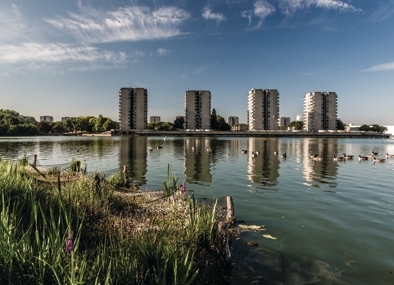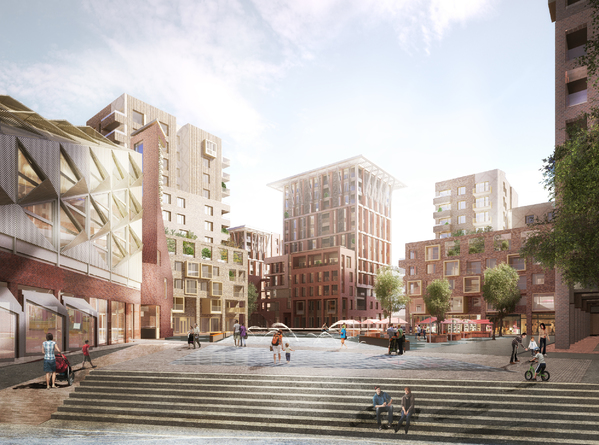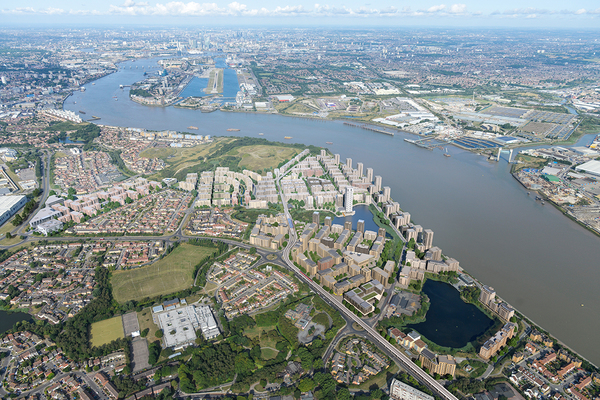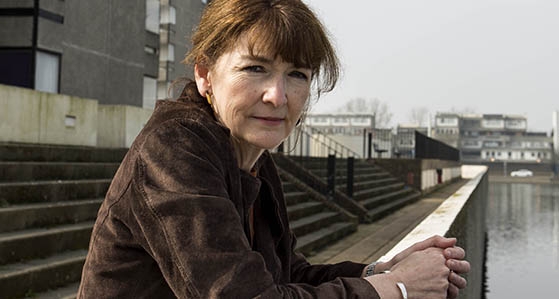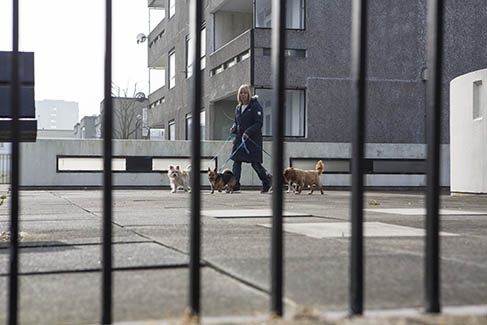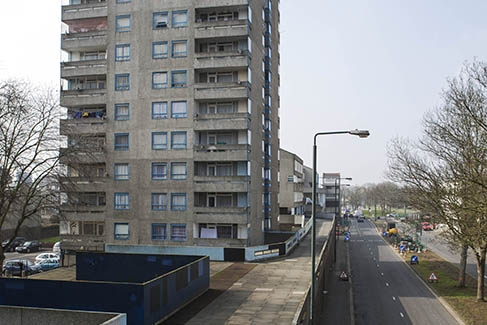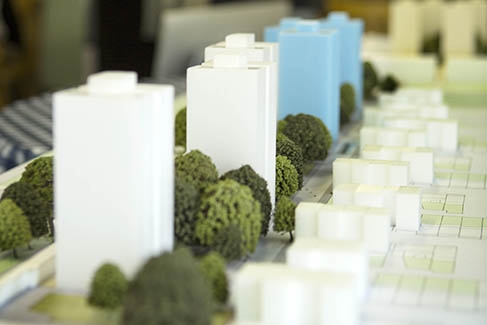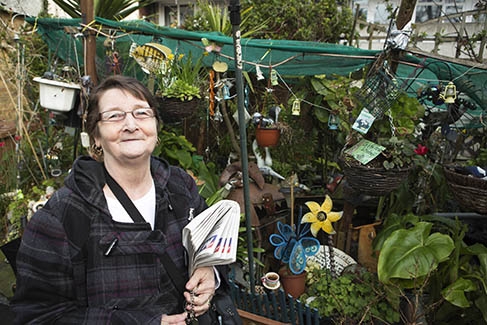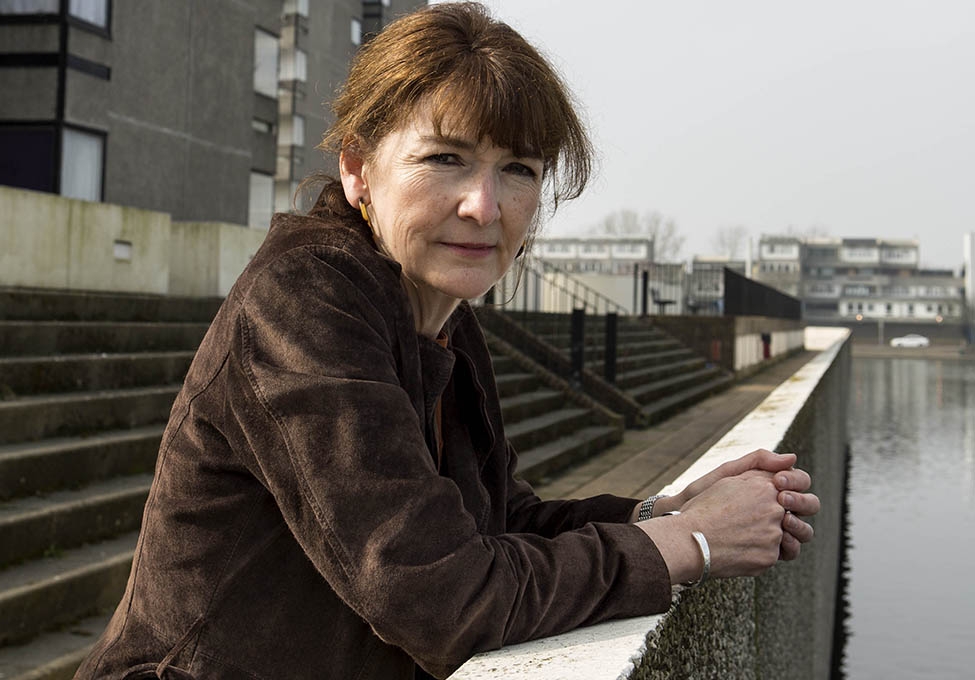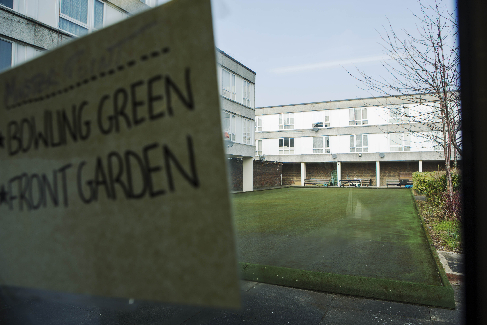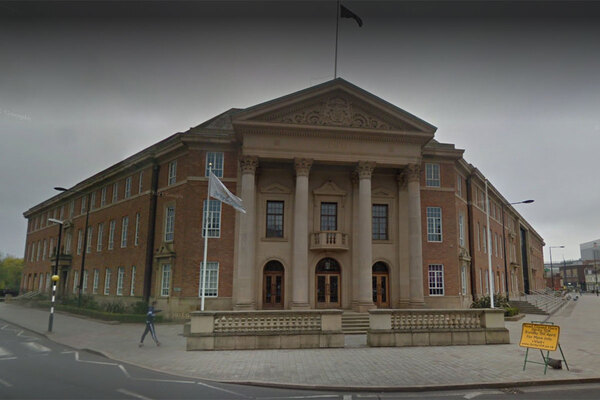You are viewing 1 of your 1 free articles
The city inside a city
Peabody is taking the reins of one of the largest regeneration schemes ever at Thamesmead in south-east London. Pete Apps takes a closer look
Video:
features code
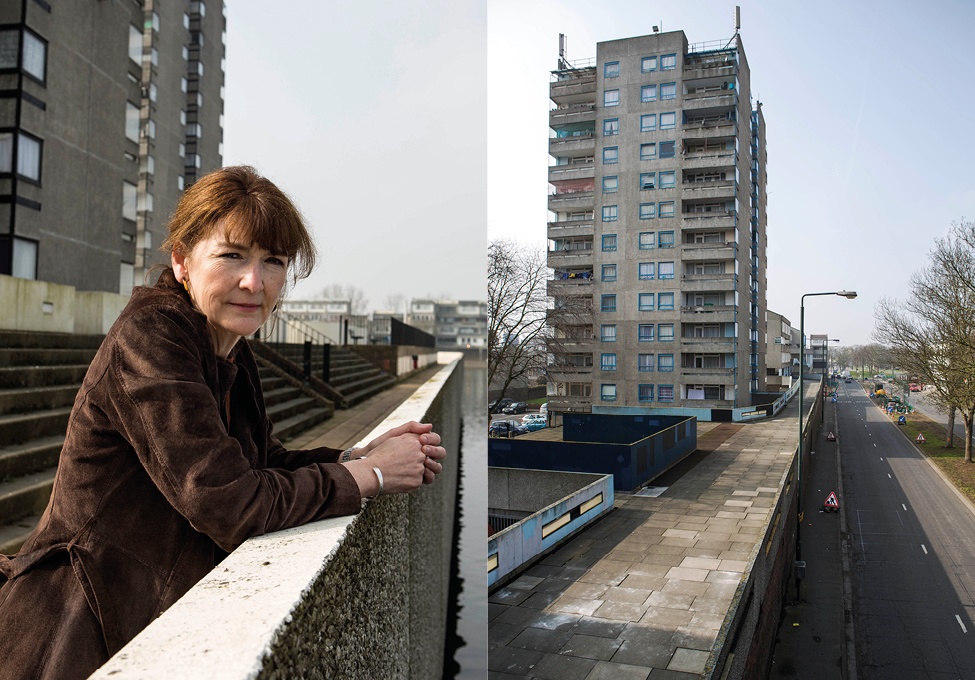
Pauline Ford, director of Thamesmead at Peabody
The first thing that strikes you about Thamesmead is its size. This isn’t just a large estate, or even a couple of large estates - it’s an entire city.
“For the first time in a generation we’ve brought all the elements of Thamesmead together.”
An urban labyrinth in south-east London, it looms up around as you drive in through the central dual carriageway - brutalist blocks rising on either side, little crannies and alleyways leading off into a maze of strange concrete housing.
Largely penned in by its own walls and the river, Thamesmead is a web of lakes, canals, walkways, tower blocks and underpasses only truly understood by those who live here. And it is here that historic London housing association Peabody has come to carry out arguably the most ambitious regeneration project in the sector’s history, with a total price tag in the billions of pounds.
Video:
Ad slot
Peabody arrived in 2014, and has since taken close to full ownership of the sprawling estate. It merged with Gallions Housing Association to take on 6,000 social homes previously owned by Gallions, and brought a £73m industrial and retail portfolio, Tilfen Land, into the group. It has also acquired Trust Thamesmead, the body responsible for the estate’s community infrastructure.
“For the first time in a generation we’ve brought all the elements of Thamesmead together,” says Pauline Ford, director of Thamesmead at Peabody. She is surveying her kingdom - a satellite photo of the estate, on a wall of Peabody’s office space in the heart of Thamesmead. With one landowner, the process is simplified.
“That’s the difference between here and everywhere else in London,” she says.
Video:
Thamesmead video
Planned vision
Originally built in the 1960s by the Greater London Corporation, Thamesmead was supposed to be a garden suburb for families moving out of Victorian terraces. But this vision has never quite been realised.
“Crossrail is going to be a game-changer for South Thamesmead, but it does diddly-squat for the rest of the estate.”
Peabody has big plans to change this. Over the next 30 years, it hopes to build 20,000 new homes around Thamesmead in a multibillion pound investment, and in doing so, completely transform the place.
In its most basic form, the plan is simple. In 2019, Abbey Wood station - Thamesmead’s only connection to the outside world - will go from offering irregular train services to London Bridge to new Crossrail trains which will run every five minutes and reach Canary Wharf in less than 15 minutes.
These trains will bring a massive uplift in house prices to an area which has some of the lowest in London. This rising value creates the potential for Peabody to use profits from sales and market rent to fund the wider regeneration.
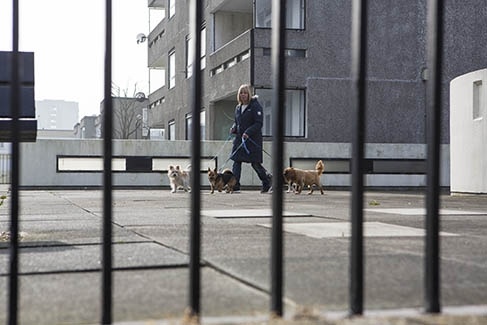
Concrete housing, which is prevalent on the estate
But this represents a small portion of the overall estate. “Crossrail is going to be a game-changer for South Thamesmead, but it does diddly-squat for the rest of it. That will remain isolated,” explains Ms Ford.
“We wanted to keep the population here if they chose to stay. That means we have to accept we are building in cost.”
This is where Thamesmead’s size comes in - home to 45,000 people in 16,000 homes (of which 6,000 house tenants, and the remainder are leaseholders and private tenants), it is roughly the size of central London. Add to that the challenging design - it is bisected by a dual carriageway and a giant sewer pipe, and one new railway was never going to be enough.
Peabody’s plan to deal with this is ambitious. Its representatives are currently “tramping the corridors of power”, Ms Ford says, trying to get the government to sign off an extension of the Docklands Light Railway under the river from east London - Peabody is prepared to help fund the estimated £1bn cost of the crossing. It is having to lobby hard.
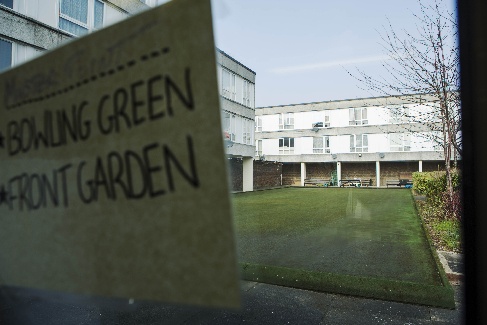
The estate has seen better days
Getting this link would make it viable to build 7,800 homes on undeveloped land in the north of the site. It would also mean, Peabody hopes, a new town centre and employers descending on Thamesmead in force. To deliver this vision, Peabody is in the market for strategic investor partners, house builders and private rented sector specialists to partner on the development.
“Regeneration will only succeed if communities play a strong role in the process from the outset.”
But it is clear that it’s Peabody, and Peabody’s principles, that will lead the regeneration.
“We took time and worked with the board,” says Ms Ford. “We set out a series of principles about how we do it. A crucial one is that we wanted to keep the population here if they chose to stay. That means we have to accept we are building in cost.”
This element sets Peabody’s regeneration plans miles apart from more aggressive approaches taken by developers elsewhere in London - on the Heygate Estate in Elephant and Castle, for example, residents were scattered across south London and beyond as their homes came down.
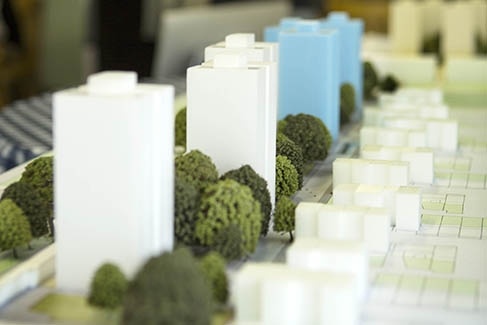
A model of the planned regeneration
There have been numerous high-profile protests about the outcome for existing tenants on several schemes over the last couple of years. And there is likely to be even more attention moving forwards thanks to the government’s announcement in January that it will work to “radically transform” 100 housing estates across the country.
Savills published a report for the Cabinet Office, Completing London’s Streets, in January exploring the issue. Robert Grundy, head of housing at Savills, points out that this found that “regeneration will only succeed if communities play a strong role in the process from the outset”.
He continues: “It is also important that existing residents are fully consulted and offered the chance to be re-housed in an equivalent or better home on similar terms.”
Peabody clearly agrees, but it does create challenges for the association, in what is already a complex project. Peabody has plans already to invest £300m in the next four years across the estate.
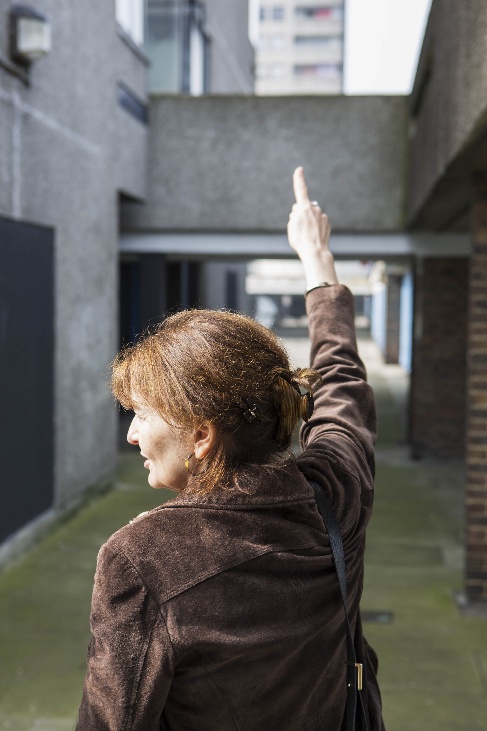
“Viability is tough because we are in the early stages,” says Ms Ford. “We can start onsite with viable projects but we’re constantly having to re-run the elements.”
This is made more complex by Thamesmead’s history. It was originally built on marshland which means construction costs are vast.
“You have to pile everything to stop it sinking. Drainage is piled, post boxes are piled. It’s a structural engineer’s heaven, but it is expensive,” says Ms Ford.
This combination of low land values and high build costs has scuppered past attempts to regenerate the estate. Most recently, Gallions’ offer of major regeneration in South Thamesmead resulted in two giant piles of rubble next to the lake and a series of unfulfilled promises.
While detailed plans for the tenure splits have not been drawn up, Peabody wants 45% affordable on the site as a whole, with existing social rent tenancies maintained. Peabody is also aware that increasing values create a challenge.

“We want values to rise but not too much so that it creates a place that is not affordable for ordinary Londoners, because it’s got such potential to help people who are struggling to find a home in other parts of London,” Ms Ford says. But she accepts this is something the association cannot fully control. Prices on leasehold homes sold under the Right to Buy have already gone up £50,000 in the year Peabody has been here, closing in on £230,000 for a three-bed, even in the old concrete housing.
Housing Zone status
The first step in the regeneration is around Abbey Wood and Plumstead stations, which were granted Housing Zone status last year - attracting £82.6m of mayoral cash from the Affordable Housing Programme, with more than £1bn of investment planned.
“Heating costs are phenomenal, structurally they are difficult to maintain and in the public realm people don’t feel safe walking around.”
The Abbey Wood Housing Zone runs in a thin strip straight up the main access road to the estate. It is here Peabody plans to create what Ms Ford calls a “red carpet”, and move on to the regeneration of the rest of South Thamesmead.
In the Housing Zone, the last few residents are being moved out of homes which will be demolished, and replaced with 1,500 new properties. Work is due to start in 2017, with the project to be fully delivered by 2024.
“As we’ve been decanting these homes, we’ve given people the opportunity to move to a Peabody home anywhere in London,” says Ms Ford. “You’ll know all the Peabody stuff in central London, it’s massive mansion blocks - one person has chosen to do that. Everybody else chose to stay in Thamesmead. That’s a massive, massive message to us.”

Ms Ford is unequivocal these residents will be able to stay: “That’s got to be one of our promises. We’ve got to cater for the people that move.”
Peabody hopes this pledge will help it build trust with residents as it begins the next phase of regeneration - a £400m regeneration scheme of 595 homes in old, concrete low-rises and 13 towers in South Thamesmead.
“We have had to go to a community that has had more masterplans shown to them than you could shake a stick at,” says Ms Ford. “Of course they will be suspicious.”
The 13 towers will stay - but with an extensive programme of retrofit. And Peabody will also pull down the Yarnton Way wall - an ugly brick structure which splits this section of the estate and limits access in and out.
Currently, the association is consulting on plans to demolish the 595 concrete homes. They have been cold and hard to heat since the estate’s district heating system was decommissioned in 2000, and individual boilers installed.
Ms Ford says: “People live in fuel poverty in there, there’s no question about it. Heating costs are phenomenal, structurally they are difficult to maintain and in the public realm people don’t feel safe walking around.”
So what do residents make of these plans?
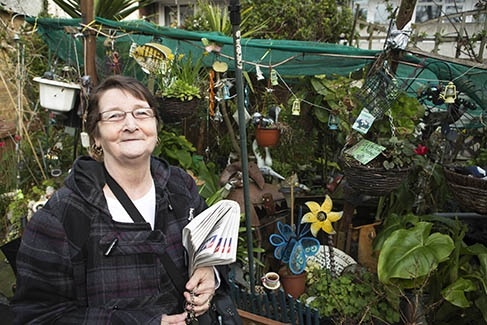
Thamesmead resident Carol Barry, who is unhappy about the proposed demolition of her home
Phil Briggs, a Thamesmead resident - former social tenant and now homeowner - of more than 40 years, is hopeful. “I love it here,” he says. “It’s been good to me.”
But he feels the estate is “tired” and hopes the regeneration will open it up. “I want people to say ‘let’s go to Thamesmead’, rather than driving through it like they do now.”
Social tenant Pam Jarrett moved to Thamesmead in 1969 as a young girl, part of the first black family to settle on the estate. Her family were among those sold the original dream of Thamesmead as a new, tranquil, modern, garden city.
She is in favour of the regeneration - hoping it might help clean up the estate and rid it of lingering problems with drugs and crime. But when she is asked if her house is one of those in line for demolition she pauses.
“I’m sorry,” she says, and dabs a tear away. “I know it needs to happen - it’s just when it’s your own home, it’s difficult, you know? I raised my children there.”
Walking around the estate, the reaction is similarly mixed. Some residents are fully behind the old houses coming down, believing the estate could be safer and more open. But others worry about the upheaval, and leaseholders fret that Peabody’s buyout offer of market value plus 10% will not allow them to buy an equivalent home in the area.
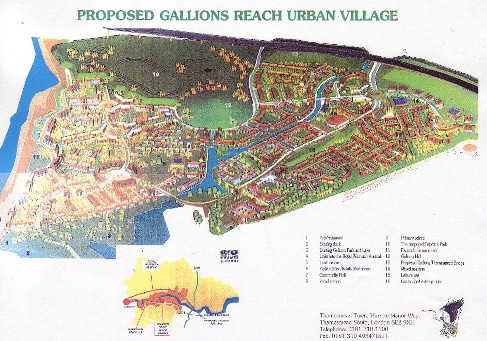
Many proposals have been put forward to regenerate Thamesmead in the past -and ultimately not been realised. This map was produced by former housing association Gallions
Carol Barry, strolling across a communal area, almost launches forward when she hears the name Peabody. “You’re killing my husband,” she says. “He’s up there, sick and it broke his heart when we got the letter. You don’t need to pull it down.”
Understanding and engaging with these feelings swirling around the regeneration - mistrust, fear, optimism and hope for change - is, Ms Ford claims, the crucial element of what Peabody is doing. Asked what the biggest challenge of the development is, she doesn’t mention train tunnels or the difficulties of constructing tower blocks on marshland.
“It’s building the trust of the residents. That’s critical,” she says. “That’s going to tell the story of us for the next 30 years. All the other technical stuff - there’s always a way. It’s the human element - the psychological element - we need to get right.”
